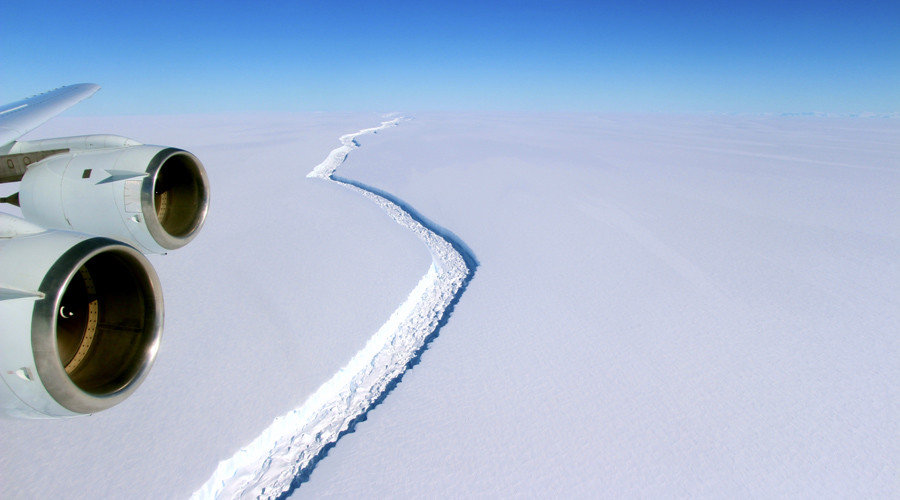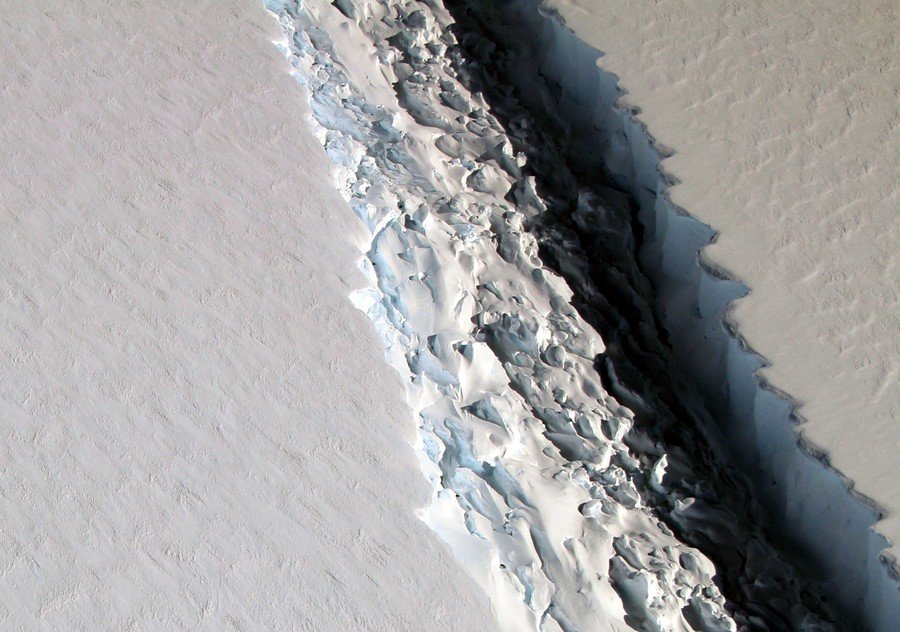
© NASALarsen C Ice Shelf
A glacier more than 80 times the size of Manhattan is on the brink of splintering from Antarctica's Larsen C ice shelf and floating off into the ocean.
Over time, a rift has steadily formed along the massive ice sheet, which lies in the Weddell Sea near the northwest of the Antarctic.
Pictures released by
NASA last November showed a 100-meter (328ft) wide and 500-meter deep (1640ft) crack slicing the incredible sub-zero temperature environment.
According to
Project Midas, a UK research group documenting the effects of global warming in the area, 10 percent of the overall Larsen C ice mass is now close to calving into the sea.
It could mean the creation of a 5,000 sq km (193 sq mile) iceberg.
In a statement, Project Midas revealed that the large iceberg is connected to the Larsen C mainland only along a 20km (12.5 mile) stretch. It added: "This [separation] will fundamentally change the landscape of the Antarctic Peninsula."
The threat of massive glacial upheaval has not only put the future of the ice shelf at risk, but also brought danger to the door of those carrying out research at the Weddell Sea location, according to the British Antarctic
Survey.
"The calving of this large iceberg could be the first step of the collapse of Larsen C ice shelf, which result in the disintegration of a huge area of ice into a number of icebergs and smaller fragments," said Professor David Vaughan, director of science at the organization.

© NASACrack in Larsen C Ice shelf
He said researchers are no longer camping on the ice due to concerns over the ice mass' stability: "Because of the uncertainty surrounding the stability of the Larsen C ice shelf, we chose not to camp on the ice this season. Researchers can now only do day trips from our Rothera Research Station with an aircraft nearby on standby."
In 2002, two-thirds of the nearby
Larsen B ice shelf collapsed in less than six weeks. NASA compared the sudden environmental change to a "car accelerating from 55 to 440mph".
News of the impending Larsen C split comes as a
study by the University of California and a group of scientists from non-profit group Berkeley Earth revealed the rate of ocean warming has risen from 0.07 to 0.12 degrees Celsius in the last 19 years.
The analysis also found that the switch over from ship to buoy temperature measurement created a 'cooling bias' which led to talk of a climate change slowdown or "global warming hiatus".
Published in the journal
Science Advances, the study suggests the switch over from ship to buoy measurement lead to varying results from three major climate research centers: the Hadley Centre, the National Oceanic and Atmospheric Administration, and Japan's meteorological agency.
"These results serve as a robust, independent validation of the NOAA temperature record and show us that the new NOA temperature record is probably the best estimate of global ocean temperatures for the last 15 years," said Zeke Hausfather, a UC Berkeley graduate and lead author of the paper.
"They show that NOAA scientists weren't cooking the books."
This is cool and a bit unnerving at the same time. You know that there is at least one, large, active underwater volcano beneath this ice sheet? Even 'Live Science' writes about it [Link] and they are normally a shill for all things AGW.
All we need is a big earthquake down there and this monster ice block will hit the water and cause tsunamis across the southern coastal areas.